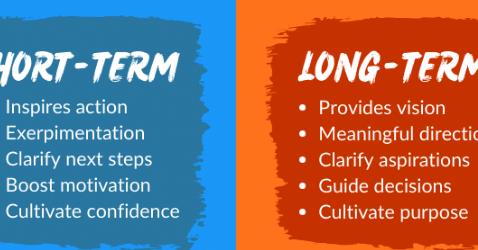How Do Short Term Goals Compare to Long Term Goals?
In the strategic planning process, both short term and long term goals play essential roles, yet they serve different purposes and drive different types of achievements. Understanding how these two types of goals compare can significantly enhance how individuals and organizations plan for success.

Defining the Timelines and Purposes
Short Term Goals: Immediate Objectives
Short term goals are typically defined as objectives to be achieved within a short timeframe, generally from a few days up to one year. These goals are designed to be immediately attainable and are often more tactical in nature.
- Specificity and Achievability: They are precise, with clearly defined parameters and measurable outcomes. For example, a sales team might aim to increase monthly sales by 10% within three months.
- Immediate Feedback: Short term goals allow for quick feedback and adjustments, which is crucial in fast-paced environments. According to a 2020 survey by the American Management Association, companies that frequently review and adjust their short term goals report a 30% higher response rate to market changes.
Long Term Goals: Strategic Ambitions
Long term goals span a longer timeframe, typically extending from five to ten years, or even longer. These goals are broad, aiming for substantial achievements that contribute to the vision and sustained growth of an individual or organization.
- Visionary and Broad-Scope: These goals are expansive, often qualitative, and focus on achieving larger aspirations, such as becoming an industry leader.
- Long-Term Planning and Patience: They require ongoing commitment and long-term resources, with progress measured over years. A study by Stanford University indicated that organizations with well-articulated long term goals succeeded in sustaining growth 40% more effectively than those without.
Impact on Strategy and Operations
Operational Focus vs. Strategic Development
Short term goals are crucial for maintaining the daily operations and momentum of a team or organization. They are actionable and ensure that smaller tasks are completed on time, supporting the overarching strategy.
- Task-Oriented: These goals often focus on immediate tasks and operational improvements.
- Resource Allocation: Typically, short term goals require fewer resources compared to long term goals, focusing more on utilizing existing resources efficiently.
In contrast, long term goals require strategic foresight and often significant resource allocation to achieve groundbreaking results. They are not just about continuing what is being done but about pushing boundaries and expanding capabilities.
- Innovation and Growth: Long term goals drive innovation and strategic shifts in an organization’s trajectory.
- Resource Intensity: They may require substantial investments in terms of time, capital, and human resources.
Balancing and Integration for Success
A well-rounded strategic plan incorporates both short term and long term goals. The short term goals serve as milestones that pave the way and prepare the groundwork for the long term goals. Effective integration involves:
- Aligning Goals: Ensuring that each short term goal aligns with and supports the broader long term goals.
- Review Cycles: Establishing regular review cycles to assess progress towards short term goals and adjust the approach to keep aligned with long term goals.
- Motivation and Milestones: Using the achievement of short term goals as motivation and validation of the strategies aimed at reaching long term goals.
Conclusion: Complementary Planning
In conclusion, understanding the difference between short term goals and long term goals is crucial for any strategic planning effort. While short term goals focus on immediate objectives and quick wins, long term goals build the foundation for future success and visionary achievements. Together, they create a layered, dynamic approach to achieving sustained growth and success, allowing organizations and individuals to navigate both immediate challenges and future aspirations effectively.